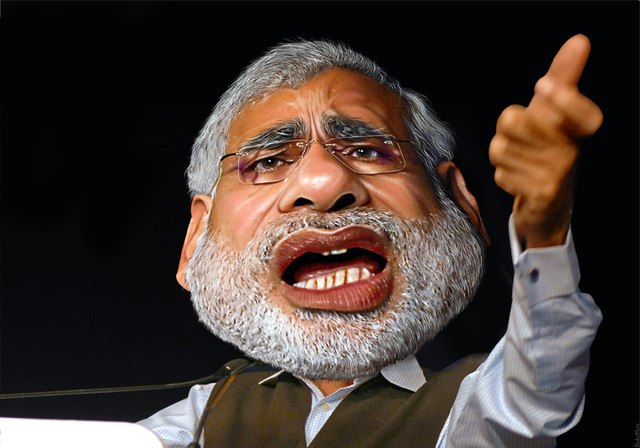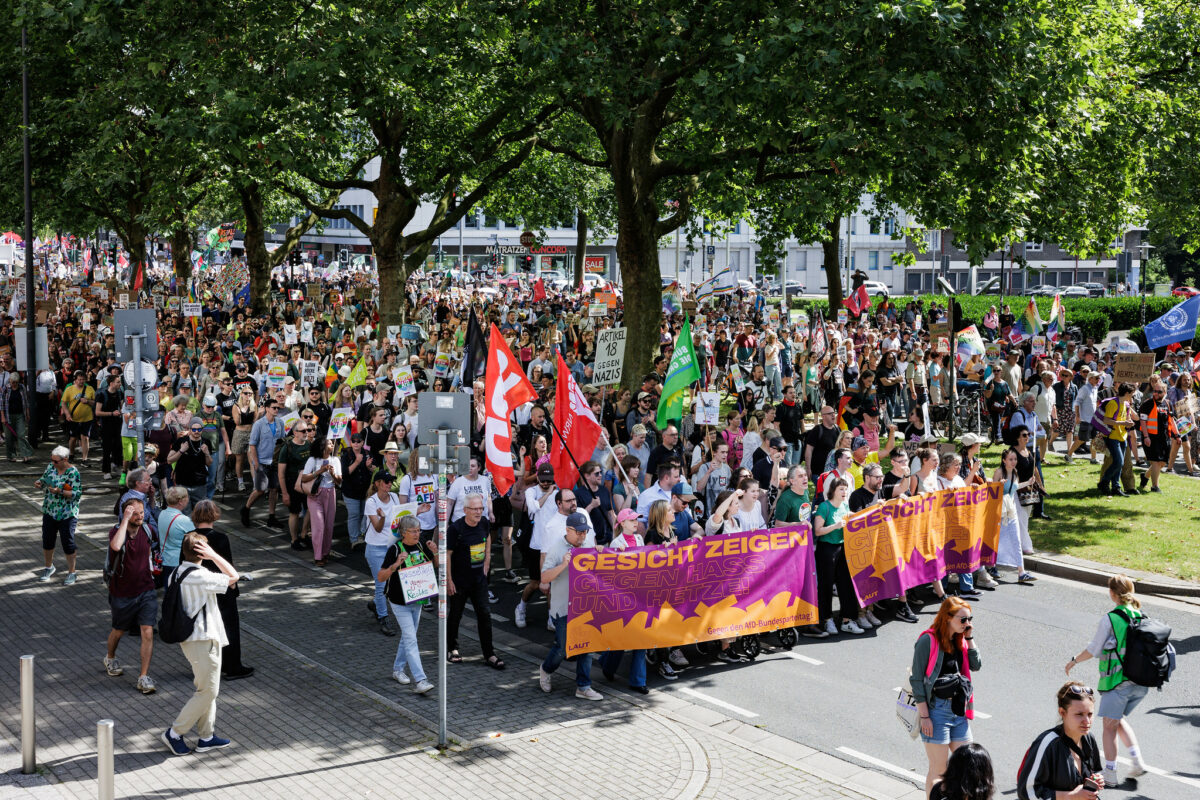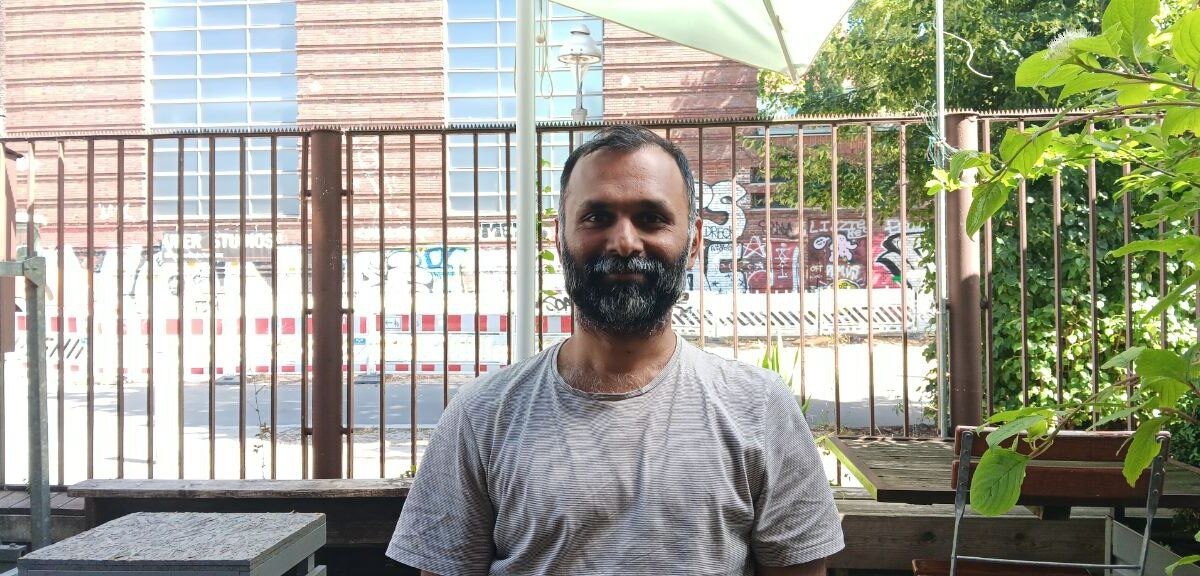The results for the recently concluded parliament elections in India were declared on 4th June, 2024. The election process took place in 7 phases, lasting for 44 days and involved voting by 642 million voters, making it the largest electoral exercise ever. And the results were quite unexpected and surprising for many. The extreme right Bharatiya Janata Party (BJP) under the prime ministership of Narendra Modi has been ruling India for the last 10 years. There was a widespread expectation, reinforced by a suppliant national media and overawed international media, that Modi would be winning the elections with an even greater majority, cementing his control over India for the foreseeable future. When the results were declared it was found that although the BJP did win the elections, the number of seats won by them has gone down drastically and it was not able to form a government on its own. Finally, Modi got support from a number of smaller parties, including two regional parties which contributed a total of 28 parliamentary seats to form the government in India for the third time. So it turns out that in India, the extreme right is a “paper tiger”. But it is also a “paper tiger” that bites.
Like the extreme right everywhere, the policies of the BJP is grounded upon attacking minorities, which in case of India are the Muslims, who at 200 million, constitute one of the largest Muslim populations in the world but are marginalized economically and socially. Marking out of the Muslims as the “other” and targeting them for repression has been the historical policy of the BJP in order to consolidate the support of the majority Hindu population. This, although described as “Hindu nationalism”, is in reality nothing but fascism. The BJP is the political front of an organization called the RSS, which though calling itself a “cultural organization”, is actually an ultranationalist, extreme right organization, run on paramilitary lines. Established in 1925, contemporary to and modeled on the Italian Fascist party, it waited for 90 years till Modi, himself a lifelong RSS member, gained power in India in 2014. Most of the top brass of the BJP belong to the RSS, and in the 10 years that Modi has ruled in India, the RSS has gained control over many aspects of India’s political and social life.
The RSS’s political philosophy is based on defeating who their founders identified as their main “enemies”: Communists, Muslims and Christians, in that order. Modi’s government has just done that in the last 10 years. It has branded its critics and opponents from the Left as “anti-nationals”, and imprisoned many of them under anti-terror laws, including some of the foremost activists, academics, lawyers and journalists of India. Muslims have been targeted by in many legal ways, including citizenship and racial purity laws to push them to the margins of Indian society and numerous physical attacks such as mob lynchings and pogroms in which dozens have been killed. Christians have been targeted by anti-religious conversion laws and their places of worship have been attacked and destroyed. Together with this, India’s most downtrodden communities, the dalits or the lower castes in India’s caste-divided society, and the adivasis, or the indigeneous people who populate many of the forested areas of India, have also been subjected to extreme repression in various ways.
While the demonization of minorities and repression of dissenters have been one aspect of Modi’s rule, the other has been a complete sellout to capitalists. While maintaining a “populist” image in the traditions of the extreme right, in reality his government has sold out India’s valuable economic assets such as mines, ports, airports, airlines and telecom infrastructure to capitalists, especially some crony capitalists who have closely supported and financed Modi’s rise to power. These economic policies have led to the highest unemployment rate in India in the last 40 years and unprecedented economic inequality. The government even passed laws which would have effectively handed over the control of agriculture, which still employs nearly 60% of India’s working population, to the corporations but which were forced to be withdrawn by a year-long resistance movement by the farmers. While people suffered from unemployment, unprecedented price rise and migration from villages to cities in search of jobs, Modi showed the dreams of India becoming a “trillion dollar economy” on the basis of his business-friendly policies.
Although leading a government deeply involved in the violation of human rights and the destruction of democracy, Modi became a darling of the so called Western democracies, the USA, UK, Germany, France, etc. The Western governments feted him, overlooking his dismal record in human rights and overtly opportunist policies such as enhancing trade with Russia during the war in Ukraine. This was because of two reasons: India’s economic position as one of the largest market for products of Western corporations and its geopolitical position as a bulwark against China for the West. Modi has used both of these positions very cleverly to his advantage, on one hand using Indian taxpayers’ money to make huge purchases of things such as warplanes and weapons from ailing Western economies and on the other becoming part of US-initiated anti-China groupings such as the Quad (together with USA, Japan and Australia). Modi has also grown close ties with Israel, with shared ethnonationalist political ideologies, becoming one of the largest buyers of Israeli weapons and also products such as the malware Pegasus, which was used to hack the cellphones of political opponents and critics from civil society.
Modi used the embraces which he received from the Western powers to cement his standing in the eyes of his support base in India. He claimed that he has made India “arrive” in the world stage. His political positioning was greatly enabled by the corporate-owned mainstream media, which has reached unprecedented levels of sycophancy and unquestioning compliance in India today. What has developed as a result is a regular personality cult around Modi, with everything, from COVID vaccines to free rations for the poor, being attributed to him. In January, he also inaugurated a newly built temple for a Hindu mythological figure to great fanfare and celebration all over the country, a temple which had been built on the site of an ancient mosque destroyed by a RSS-led mob in 1992. This had made Modi claim nearly semi-divine status for himself. All the ingredients for a fascist dictatorship was in place in India.
Modi’s power was further reinforced by a parliamentary opposition which was weak, directionless and completely unable to face the challenges put forth by the BJP and its repressive tactics. Many leaders of the opposition parties were harassed by national investigative agencies and many were imprisoned for different lengths of time. Further, the opposition was disunited and many of the opposition parties including the main opposition party, the Indian National Congress, often toed the same line as the BJP in encouraging majoritarian Hindu sentiments, out of fear of losing the votes of Hindus. The many regional parties in India were competing with each other for power and could be used by the BJP against each other whenever necessary. It was thus taken for granted that Modi and the BJP would win the elections by a landslide in and attain unprecedented power, even allowing them to change the democratic constitution of India and convert it into a majoritarian, fascistic state.
The elections in India were held in this background in which the future existence of democracy in India was at stake. Fortunately, the opposition Congress party was able to revive itself, especially due to the two countrywide marches made by the leader of the party Rahul Gandhi. This brought the Congress party in closer contact with the common people and also reinvigorated the organizational structure of the party. The Congress also shifted its political position more to the left, basing its election campaign on promises of social and economic justice. Moreover, the Congress and a number of other parties formed an alliance, called the Indian National Developmental and Inclusive Alliance (INDIA) which agreed to put up joint candidates against the BJP in as many seats as possible. Initiatives by activists and civil society organizations also contributed to the development of the opposition to the BJP. The farmers’ movement, which had been ultimately successful in getting the pro-capitalist farm laws withdrawn because of their ability to stay on the streets and resist state repression, had also shown that it was possible to defeat the extreme right with an organized mass movement. On the other hand, the election campaign by the BJP, especially Modi, was directly and ruthlessly targeted against the Muslims, with the aim of consolidating the votes of the majority Hindus in their support. The BJP publicly declared that they were going to get more than 400 among the 543 seats in the Indian parliament, which would give them an overwhelming majority. In interviews, Modi was even talking of a “1,000 year vision”, eerily reminiscent of an earlier “1000 year Reich”.
The election results appeared to be set in stone, with even exit polls held on the last day of voting predicting an huge win for the BJP. However, in a nail-biting finish to the elections, the BJP only won 240 seats, well short of the 272 to reach a majority of their own, and much less than the 303 seats which they had won in the last election. The opposition INDIA alliance won 234 seats, up 149 seats from last time. The BJP finally cobbled up 293 seats together with its allies in the National Democratic Alliance (NDA). This allowed Modi to finally form the government for the third time. This government is expected continue to exert the same authoritarian and repressive rule, and early signs such as the order to initiate prosecution of the famous author and steadfast critic of the government, Arundhati Roy, under an anti-terror law, point in that direction. But the hope is that the resistance to all these will be stronger, as the weakness of the BJP and Modi has become evident.
There are many reasons why the extreme right did not get the electoral victory in India which most people were expecting. It appears that many of the backward castes had turned against the BJP because of their concern that if the BJP won with a huge majority they would change the provisions of the Constitution which protected their social rights. The unprecedented attack on the lives and livelihoods of the poorest people had finally made them turn against the BJP, regardless of the blatantly xenophobic propaganda they were exposed to. Moreover, very crucially, the RSS itself had felt threatened by the rise of the personality cult of Modi, as he was overshadowing the organization, and the cadres of the RSS on the ground had turned against the BJP. And lastly, the opposition parties had been able to organize to pose a challenge to the BJP on the ground.
There are multiple lessons to be drawn from the elections in India, especially in the context of the rise of the extreme right in Europe and their electoral successes. It is to be understood that the extreme right has gained strength in India since the last 30 years, and their ideological fountainhead, the RSS, is one of the original fascist organizations of the 20th century.
The strengthening of the extreme right in India mirrors other countries worldwide, because of the economic hardships, cultural dislocation and frustrations of the middle and working classes due to globalization and neo-liberal economic policies. Just as the extreme right everywhere consolidates its support base by pointing at a perceived enemy, such as migrants in the USA and Europe, the RSS-BJP in India has consolidated its support base among the majority Hindus by marking the Muslims as the perceived enemy.
But these elections also show that the extreme right can be challenged and weakened, and the only way to do that is to organize and put up a united fight. Finally, elections are won, or lost, by organization or the lack of it. It is also important for the centre-left to realize that in order to win against the extreme right, it is important to take up the ideologically opposite pole at the left, rather than to mimic their political positions.
It is also evident that civil society and activist organizations play a crucial role in creating the opposition to the extreme right, and the opposition political parties need to recognize and reinforce that. It is clear that the people will rise up against the extreme right only when they will see with confidence that an organized opposition at the opposite ideological pole is present and ready to fight it.



